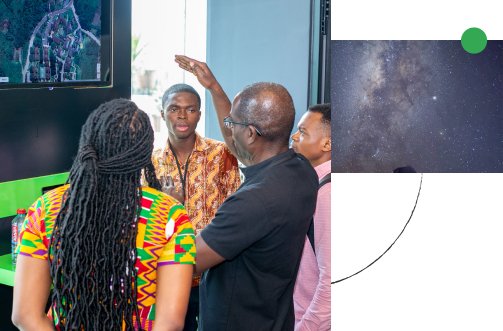Algorithms and Theory
Google’s mission presents many exciting algorithmic and optimization challenges across different product areas including Search, Ads, Social, and Google Infrastructure. These include optimizing internal systems such as scheduling the machines that power the numerous computations done each day, as well as optimizations that affect core products and users, from online allocation of ads to page-views to automatic management of ad campaigns, and from clustering large-scale graphs to finding best paths in transportation networks. Other than employing new algorithmic ideas to impact millions of users, Google researchers contribute to the state-of-the-art research in these areas by publishing in top conferences and journals.
Recent Publications
Preview abstract
We extend conformal prediction to control the expected value of any monotone loss function. The
algorithm generalizes split conformal prediction together with its coverage guarantee. Like conformal
prediction, the conformal risk control procedure is tight up to an O(1/n) factor. Worked examples from
computer vision and natural language processing demonstrate the usage of our algorithm to bound the
false negative rate, graph distance, and token-level F1-score.
View details
Delphic Offline Reinforcement Learning under Nonidentifiable Hidden Confounding
Alizée Pace
Hugo Yèche
Bernhard Schölkopf
Gunnar Rätsch
The Twelfth International Conference on Learning Representations (2024)
Preview abstract
A prominent challenge of offline reinforcement learning (RL) is the issue of hidden confounding. There, unobserved variables may influence both the actions taken by the agent and the outcomes observed in the data. Hidden confounding can compromise the validity of any causal conclusion drawn from the data and presents a major obstacle to effective offline RL. In this paper, we tackle the problem of hidden confounding in the nonidentifiable setting. We propose a definition of uncertainty due to confounding bias, termed delphic uncertainty, which uses variation over compatible world models, and differentiate it from the well known epistemic and aleatoric uncertainties. We derive a practical method for estimating the three types of uncertainties, and construct a pessimistic offline RL algorithm to account for them. Our method does not assume identifiability of the unobserved confounders, and attempts to reduce the amount of confounding bias. We demonstrate through extensive experiments and ablations the efficacy of our approach on a sepsis management benchmark, as well as real electronic health records. Our results suggest that nonidentifiable confounding bias can be addressed in practice to improve offline RL solutions.
View details
Preview abstract
Given a training data-set $\mathcal{S}$, and a reference data-set $\mathcal{T}$, we design a simple and efficient algorithm to reweigh the loss function such that the limiting distribution of the neural network weights that result from training on $\mathcal{S}$ approaches the limiting distribution that would have resulted by training on $\mathcal{T}$. Such reweighing can be used to correct for Train-Test distribution shift, when we don't have access to the labels of $\mathcal{T}$. It can also be used to perform (soft) multi-criteria optimization on neural nets, when we have access to the labels of $\mathcal{T}$, but $\mathcal{S}$ and $\mathcal{T}$ have few common points.
As a motivating application, we train a graph neural net to recognize small molecule binders to MNK2 (a MAP Kinase, responsible for cell signaling) which are non-binders to MNK1 (a very similar protein), even in the absence of training data common to both data-sets. We are able to tune the reweighing parameters so that overall change in holdout loss is negligible, but the selectivity, i.e., the fraction of top 100 MNK2 binders that are MNK1 non-binders, increases from 54\% to 95\%, as a result of our reweighing.
We expect the algorithm to be applicable in other settings as well, since we prove that when the metric entropy of the input data-sets is bounded, our random sampling based greedy algorithm outputs a close to optimal reweighing, i.e., the two invariant distributions of network weights will be provably close in total variation distance.
View details
PriorBoost: An Adaptive Algorithm for Learning from Aggregate Responses
Adel Javanmard
Proceedings of the 41st International Conference on Machine Learning (2024), pp. 21410-21429
Preview abstract
This work studies algorithms for learning from aggregate responses. We focus on the construction of aggregation sets (called \emph{bags} in the literature) for event-level loss functions. We prove for linear regression and generalized linear models (GLMs) that the optimal bagging problem reduces to one-dimensional size-constrained $k$-means clustering. Further, we theoretically quantify the advantage of using curated bags over random bags. We propose the \texttt{PriorBoost} algorithm, which iteratively forms increasingly homogenous bags with respect to (unseen) individual responses to improve model quality. We also explore label differential privacy for aggregate learning, and provide extensive experiments that demonstrate that \PriorBoost regularly achieves optimal quality, in contrast to non-adaptive algorithms for aggregate learning.
View details
Preview abstract
Algorithms for the computation of alternative routes in road networks power many geographic navigation systems. A good set of alternative routes offers meaningful options to the user of the system and can support applications such as routing that is robust to failures (e.g., road closures, extreme traffic congestion, etc.) and routing with diverse preferences and objective functions. Algorithmic techniques for alternative route computation include the penalty method, via-node type algorithms (which deploy bidirectional search and finding plateaus), and, more recently, electrical-circuit based algorithms. In this work we focus on the practically important family of via-node type algorithms and we aim to produce high quality alternative routes for road netowrks. We study alternative route computation in the presence of a fast routing infrastructure that relies on hierarchical routing (namely, CRP). We propose new approaches that rely on deep learning methods. Our training methodology utilizes the hierarchical partition of the graph and builds models to predict which boundary road segments in the partition should be crossed by the alternative routes. We describe our methods in detail and evaluate them against the previously studied architectures, as well as against a stronger baseline that we define in this work, showing improvements in quality in the road networks of Seattle, Paris, and Bangalore.
View details
×
